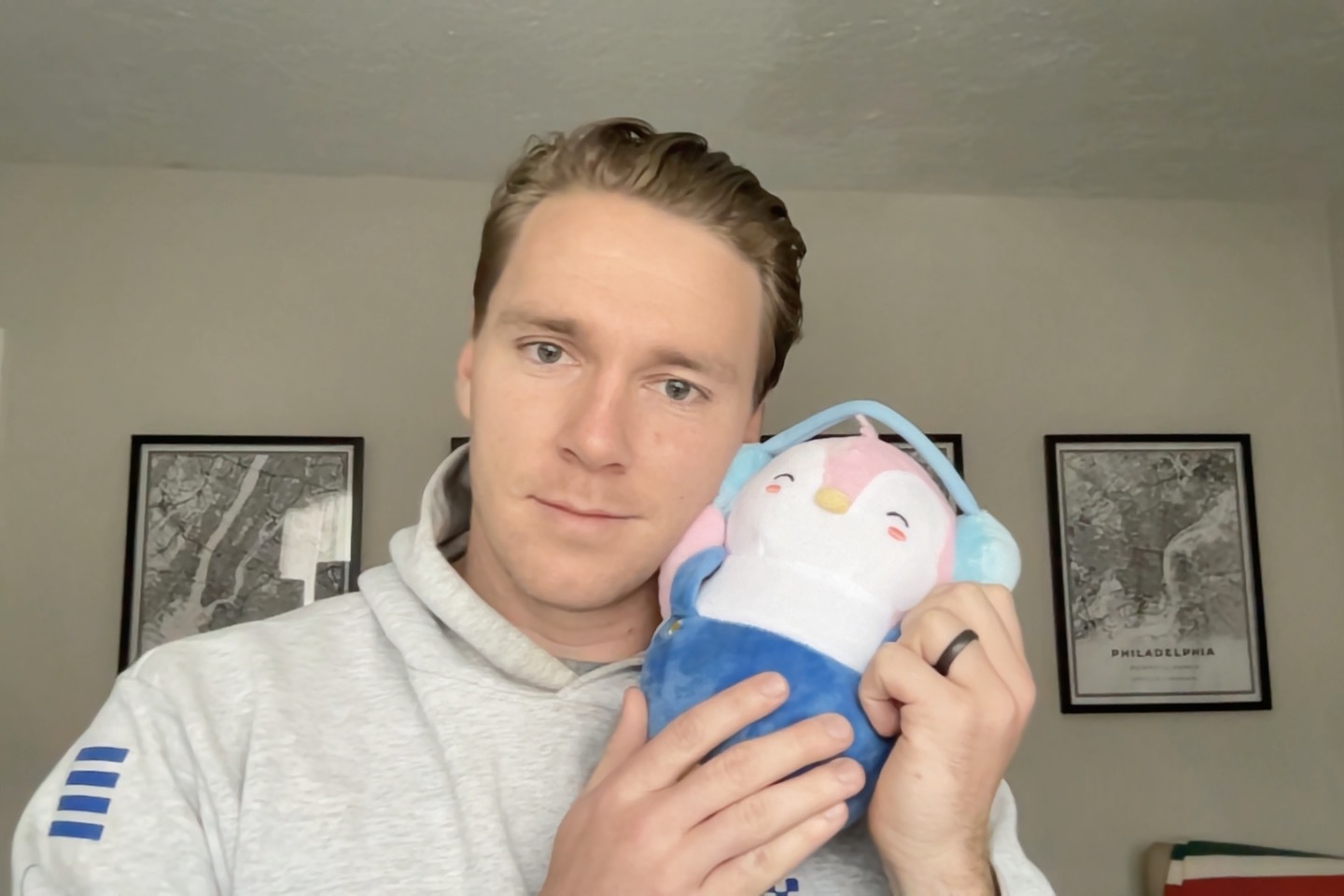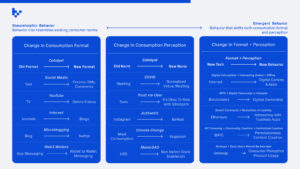Mason Nystrom
When Tokens Shape Behavior
A framework for studying tokenomics and net-new markets
Consumer behavior can shift overnight or over decades. Almost overnight, the pandemic shifted the global perception of remote work from “a nice to have” to a necessity for normal business operations. Yet, from the start of the century it took nearly two decades for the relatively obscure veganism movement to go from negligible in the U.S. to tens of millions vegans. Large scale changes in consumer behavior are often catalyzed by new technologies, macro trends, or global events.
Throughout the 21st century, the primary catalyst for new consumer behaviors has been novel social technologies: the Internet, mobile phones, social networks, and blockchains are just a few of these. Given that blockchains are as much a technological innovation as they are a social revolution, web3 has sowed fertile ground that will continue to seed new consumer behaviors.
Tokens provide a mechanism to shape how users behave in a network, providing exciting ways to potentially predict and engineer new consumer behaviors. Entrepreneurs, developers, and creators will leverage tokens to expand upon existing behavior and purposefully – or inadvertently – create new consumer norms.
Skeumorphic vs. Emergent Consumer Behavior
In product design, skeuomorphic design is the process of making existing items resemble their real world counterparts – to take a photo on your phone, you select the camera icon. Similarly, “skeuomorphic behavior” is user activity that resembles existing consumer behavior – it only changes the consumption format or perception, but not both. Conversely, “emergent behavior” is the closest to net new consumer actions, combining both new consumption formats and changes in consumer perceptions. While there are various catalysts for any change in consumer behavior, emergent behavior – alterations in both consumer format and perception – is often catalyzed by new technologies.
The advent of social media, whether Facebook or Reddit, simply took an existing consumer behavior like texting on flip phones and morphed it into DMs, comments, and public forums. Other shifts in consumer behavior keep the underlying consumption format, but instead, the new technologies, macro trends, or events shifted consumer perception or how people interacted with each other. Uber and Airbnb created marketplaces that leveraged economic and social incentives to commoditize trust (if you lie or if you’re a bad actor we’ll kick you off our platform and you won’t be able to make money or obtain this great service).
However, the most transformative technologies often change both the underlying consumption format and shift consumer perception.
Air travel fundamentally upended the previous format from cars and trains to aircrafts and necessitated moving the “overton window” to believing that flying was at least as safe as driving. The internet shifted the consumption format from physical to digital and demanded a greater shift in consumer perception – that there was value in online communities and relationships. The most dramatic shifts beget new behaviors.
Change in consumption format
The most skeuomorphic consumer behavior is a change in consumption format. Written communication has been an existing consumer behavior that has evolved in format with successive technologies. The internet spurred the birth of blogging which eventually turned into “microblogging” via social networks like Twitter.
Change in consumer perception
Consumer perception can change gradually or in an instant. Beyond zoom meetings, the pandemic shifted the global perception of telemedicine and a variety of other previously in-person services.
Oftentimes consumer perception changes first in a smaller audience then shifts mainstream over time. Every social network starts with an element of authenticity that serves as the catalyst for growth, BeReal being the latest example. Facebook was authentic and exclusive among your university classmates and Snapchat was less filtered than Instagram until the authenticity eventually faded with mass adoption (and mass advertising).
Emergent Consumer Behavior (Changes in format + perception)
The newest forms of consumer behavior, the most “emergent consumer behavior” require a shift in both consumption format and perception.
Blockchains catalyzed the birth of NFTs which have facilitated both a shift in consumption format (from digital photos to blockchain objects) as well as a shift in consumer perception – that digital objects are ownable and valuable. Similar to Airbnb, Ethereum changed consumer perception by commoditizing trust for financial transactions and shifting the transaction format from web2 app to web3 protocols for financial transactions. This combinational change in format and perception has led to the broader adoption of DeFi – trustless financial applications and protocols.
Leveraging Tokens & New Crypto Consumer Behavior
While not all new consumer behaviors are predictable, tokens are a often new format for consumption and enable companies or protocols to design human behaviors.
By examining consumer behavior via these lenses – skeuomorphic and emergent – we can envision how consumers might behave in the future.
Let’s examine three potential skeuomorphic and emergent crypto behaviors:
Communication & Social
- Skeuomorphic: W2W (wallet to wallet) messaging – individuals connecting via their wallets on platforms like OpenSea or Magic Eden.
- Emergent: Web3 Social – open social graphs mean followers can be ported (how does this change where we interact with creators), content is issued as NFTs (will consumers think it’s valuable?),
Physical Infrastructure
- Skeuomorphic: Nova Labs: physical infrastructure can be built and designed by private companies (e.g. Built helium blockchain and miners).
- Emergent: Helium – The unlock of blockchains meant the ability to coordinate socioeconomic behavior which Helium pioneered into a business model where consumers were rewarded for allocating capital (buying a hotspot) and performing work (setting up and running the hotspot). This has spawned a variety of projects that have iterated on Helium’s model for new use cases: DIMO (vehicle data), Hivemapper (location data), Pollen (5G), Helium (5G), and more.
Token Distribution
- Skeuomorphic: token incentives – getting rewarded in tokens versus via referrals, discounts, or cash back.
- Emergent: Retroactive Airdrops – Uniswap’s airdrop started a chain reaction of retroactive airdrops for protocol usage whereby protocols feel obligated to reward their community and consumers now preemptively use new products.
Airdrops are an interesting example of how an experiment in token distribution can spark new consumer behavior over time. This model has already been iterated on with the Hop Protocol (sybil resistant airdrop) and Optimism airdrop (rewarding based on more refined criteria).
Obviously tokens offer a design space beyond distribution and growth marketing. When we shift our perception to think of tokens as products, we open the door to the adjacent possible of consumer behavior. That is to say, “how do new types of tokens – distributions, functions, and incentives – shape consumer behavior”?
While it’s impossible to fully predict new social behaviors, they are often catalyzed by innovative business models, technologies, or macro events and trends. Cryptonetworks and tokens provide a glimpse into the future of skeuomorphic and emergent human behavior.
Thank you to Li Jin, Jesse Walden, Medha Kothari and Adam Delehanty for informing my thoughts and providing valuable feedback.
Additional reading:


